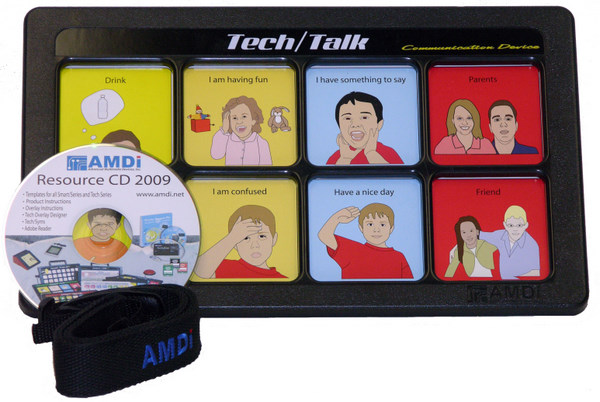"The single biggest problem with communication is the illusion that it has taken place."
George Bernard Shaw
If only communication was this easy for everyone. People who have: cerebral palsy, learning disabilities, have had strokes, autism, illnesses such as autoimmune disease, Parkinson's disease, multiple sclerosis, head injuries and early stages of dementia may not have the ability to communicate. They depend on augmentative and alternative ways to communicate. There are many different types of low, mid and high tech communication devices available to suit individual needs.
Low Tech Devices:


Mid Tech Devices:
High Tech Devices:
If you would like to know more details about each device, just click on its name.
And my favorite AAC option, to date, is the app: Proloquo2go !!!
It is amazing! This app is available for the iPad, iPad mini, and iPhone. This is a powerful assistive technology tool for those who require an augmentative and alternative means to communicate. What makes this app great, apart from the price (much less expensive than most of the above devices) is that it can be tailored specifically to the users needs. These needs are not locked in and changes can be made as the user becomes more comfortable and grows in abilities and wants. Some of the adjustable options include: tap control (number of times or length of tap time) cell size, cell color and background color, voice choice, and users can decided if each cell has one word attached to it or full sentences. Users also have the ability to personalize it by using their own pictures instead of the pre-programmed choices. This is why it is so important to have not only the SLP, learning center teacher and classroom teacher as part of the planning team, but the student and parents too. The more engaging it is to the user the more they will use it so it is essential to tailor the app.
It is extremely easy for me to recommend this app because I have some experience using it. As an assignment, my partner (Karen) and I created a communication board for a student with specific needs. Once we planned what is was we wanted for this student, setting up the communication board was a piece of cake. We created four environments for the student (home, school, activities and playground) and in each environment we were able to build further levels of cells; providing as many choices possible to fit her abilities and experience. We played around with the cell sizes and colours, background colour and length of time the student would need to hold her finger on the cell. As we gained confidence, we played around with the options because mistakes were so easy to undo and changes were so easy to make. The hardest part of the whole process was waiting for my turn to add cells.
Below is a young boy Max who is a new user to Proloquo2go and having a conversation with his mom.
It would be wonderful to hand someone whatever appropriate AAC device was needed and away they go. This is not the case, communication skills need to be taught. Barb gave us an article entitled "Pardon the Interruption: Enhancing Communication Skills for Students with Intellectual Disability" written by Bayes, Health, Williams & Ganz (2013) which details the behavior chain interruption strategy (BCIS). This is an evidence-based intervention effective in teaching communication skills to students with varying disabilities. Basically the intervention interrupts a child in their routine and during the interruption a new behaviour (way to ask to have a need filled) is taught. This cycle is repeated over a period of time until the student automatically asks for what is needed in the appropriate manner.
Learning to communicate is difficult enough, I can't imagine how it must feel to those who seem to be locked inside themselves. Thank heavens for AAC devices.
Bayes, D.A., Heath, A. K., Williams, C. & Ganz, J. R. (2013). Pardon the interruption: Enhancing communication skills for students with intellectual disabilities. Teaching Exceptional Children 45(3), p.64-70






